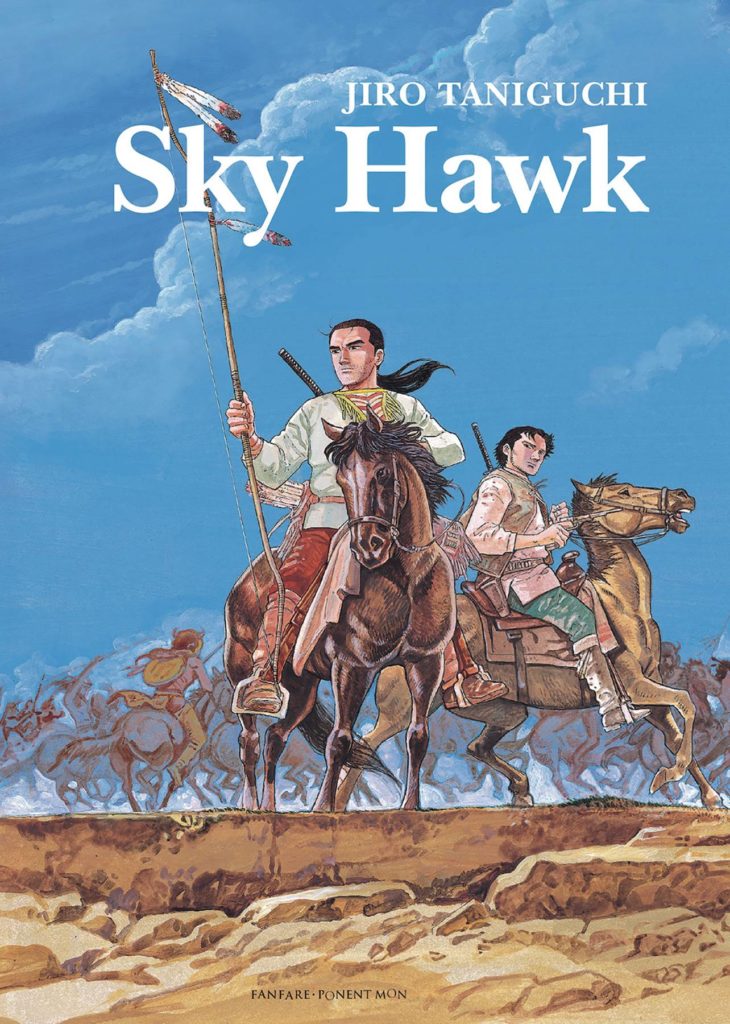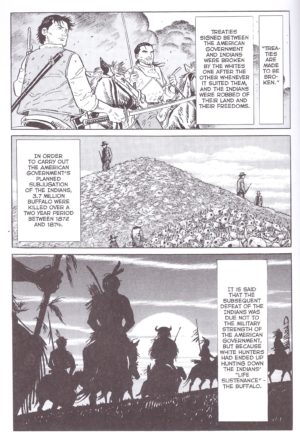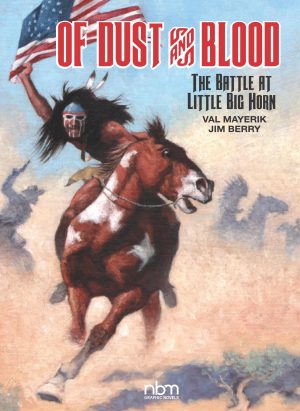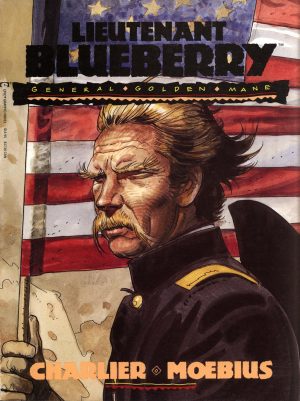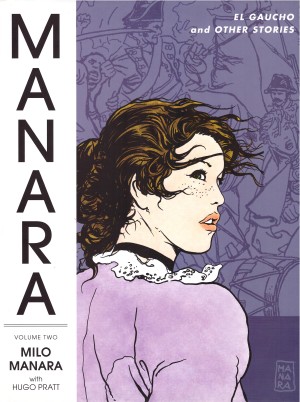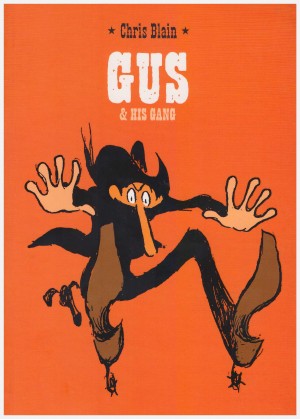Review by Karl Verhoven
Jiro Taniguchi’s Sky Hawk is a very individual Western, seemingly prompted by a love of the genre combined with a desire to rectify the one-sided nature of the Hollywood films. In constantly casting Native Americans as, at best, the predominant danger they overlooked the inconvenient historical truths of persecution and broken treaties, and Sky Hawk makes a point of mentioning that. The viewpoint is provided by Japanese immigrants Hiko Saburō-Soma and Manzō Shio-Tsu, drawn to America by stories of fortunes to be made mining gold, and finding the reality very different. An act of kindness has them befriended by the Oglala Sioux people based near the Bighorn river in Wyoming. Readers who know their American history will know where the story’s heading.
For a Western, there’s an unconventional placidity punctuated by brief bursts of action, Taniguchi keen to draw the wonder of the scenery. There’s at least one big action scene in each of the ten chapters, and here Tanguchi frequently departs from the sanitised violence of his cinema influences. Hiko and Manzō are accomplished swordsmen and their skill results in opponents’ limbs lost, while there’s no shortage of panels emphasising the horror of combat. It’s all beautifully drawn, the locations expansive, the people given nobility, and the detail ever-present no matter how small the panel. Frequent skirmishes between the Sioux and the American army occur after the halfway point, and the amount of men and horses in some panels is astounding.
Hiko and Manzo live by their code as swordsmen, “nothing is as offensive as the wrongdoing of breaking an oath”, an early indication, and life among the Oglala Sioux has an honesty they admire. Given new names of Sky Hawk and Winds Wolf, the pair are welcomed, and with longbow and judo skills have much to teach. The story being set in the era of railway construction and the consequent wholesale slaughter of buffalo sets up a foreboding. Time moves on by years between some chapters, until it becomes apparent that what began as Western fiction sensitive to the Native American way of life has become a history lesson. Taniguchi introduces General George Custer, and lays out exactly why he died in 1876, but nevertheless became a rare case of the loser writing history. Almost 150 years later there’s still a widespread belief he died a hero.
In an afterword Taniguchi recalls how difficult it was to interest a Japanese publisher in his telling of Crazy Horse and Custer’s stories, the Japanese Sky Hawk and Winds Wolf being the concession enabling publication. He also notes his cinema and bande desinée influences, among the latter several French series never translated into English. If the likes of Commanche, Jonathan Cartland and Mac Coy impressed a master artist like Taniguchi, they must be something special. For all Taniguchi’s skill and enthusiasm, Sky Hawk can’t match his influences. The pacing is too slow, the mood too calm and there’s never really any knowing Hiko and Manzo beyond their honourable deeds. As anomalies there needed to be something more to them. The art carries Sky Hawk a long way, and it’s a good graphic novel, but not a great one.
